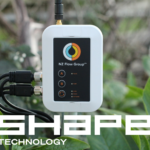
The New Zealand Department of Conservation is charged with managing over a third of New Zealand’s land. Much of this land is without cell reception, meaning that DOC’s vital duties of preserving biodiversity and assisting in search and rescue operations must rely on radio to communicate in this area. Adding to the issue in the ruggedness of this terrain. These radio communications would otherwise be blocked were it not for over 120 radio repeater sites owned and operated by DOC. However, the obstacles to being able to communicate in these vast ranges does not stop there. These radio repeaters needs be in some of the most remote regions of New Zealand for them to do their jobs, making the tasks of monitoring, controlling, and maintaining them another challenge DOC must contend with. It is for this reason that they turned to Shape Technology for a solution.
Due to the importance of these sites, repairs need to be caried out before the site fails, which requires close monitoring. Previously, these sites could only be monitored by physically travelling to them, tricky prospect when the only way to reach many of them is by helicopter, which is both expensive and potentially dangerous. This difficulty resulted in sites previously being down for weeks at a time before something could be done about their issues. Now that is outdated thanks to Shape Technology’s remote tracking.
Shape Technology’s solution to this problem required overcoming the severe limitations that the sites put on the ability to power the hardware component of the design. The sites rely on solar power and batteries to function. This had to be sufficient to power all the data collection and communications being done by the IoT hardware installed into the site, with the additional constraint of not using so much as to deprive the other functions of the relay site. This was achieved by careful design of the installed unit as well as the chosen method of communication back to DOC which posed its own problem.
Indeed, the data being transmitted back to DOC must contend with the same communication issue that the sites were originally set up for. To provide reliable connection in addition to low power usage Shape Technology turned to the Swarm network of satellites. This network provides 100% coverage meaning that the Shape Technology devices can always remain connected despite their remoteness. Their low power modems, installed in each of the Shape Technology units on this project, were able to meet the power consumption requirements demanded by the nature of the radio relay sites.
“Swarm is a rock-solid communications technology,” said Shape Technology General Manager Duncan Chisholm. “It needs to be. Some of the sites our solutions are deployed at are very remote and access may be impossible at certain times of the year. There is sometimes no mobile infrastructure where our customers operate, so we rely on Swarm to get the data we collect out of the field.”
With the core issues with the project overcome Shape Technology were able to remotely track key data points at each site, including battery power voltage, peak loads, and the health of solar panels powering the radio repeaters and IoT components. DOC can also now track frequency each radio repeater site gets used, helping them determine which locations to prioritize.
“DOC feels that this program has already paid for itself,” says Duncan. “Not only have they avoided unnecessary helicopter trips to check the sites in person, but more importantly DOC has been able to effect repairs to a number of sites before they failed, meaning the rangers in the field are getting a more reliable service.”
The reduction in helicopter trips to check the sites has had additional effect. “Reducing the number of helicopter flights to service these sites not only reduces costs. It also improves DOC’s sustainability”, says DOC Senior Radio Engineer Colin Hopkinson. “DOC plans to be a low carbon business, and to achieve that it has to reduce its emissions. Currently helicopter use contributes about 3,000 tonnes per year of DOC’s total annual emissions of 10,000 tonnes. By reducing service flights to the repeater sites, it will greatly lessen our carbon emissions.”
The ongoing partnership between Shape Technology and the Department on Conservation has proven to be a fruitful one, and we look forward to continuing to provide them the data they need to effectively manage New Zealand’s biodiversity.




